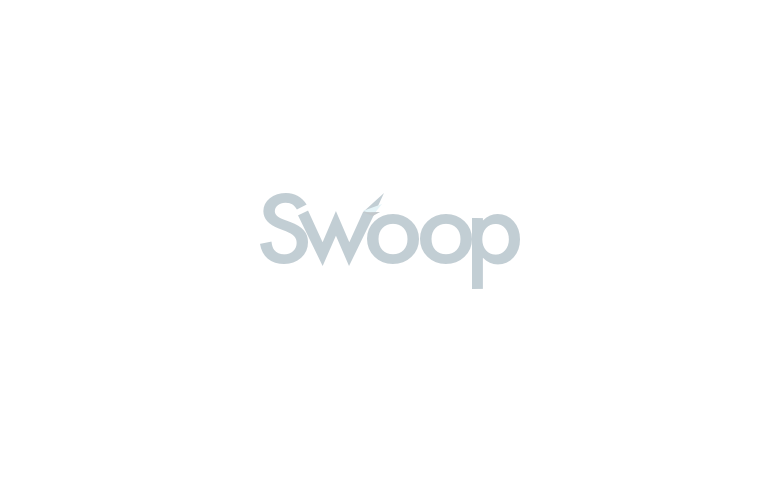TABLE OF CONTENTS
Page written by Chris Godfrey. Last reviewed on November 27, 2024. Next review due April 1, 2026.

If you’re an entrepreneur looking for the perfect business opportunity, how much easier would your search be if you knew you definitely had the funds to quickly close the deal instead of waiting for a lender’s approval?
Delayed draw-term loans can provide access to a pool of funds as and when you need them, and you only pay interest on the borrowed funds you withdraw. If this sounds like your perfect financial solution, you aren’t alone. DDTLs are now commonly used to finance all kinds of business opportunities by organizations large and small. Read on to find out more about DDTLs, how they work and what they can do for you.
A delayed draw term loan (DDTL) is a term loan that allows the borrower to withdraw the loan proceeds over time instead of receiving it all at once. This may sound a lot like a revolving line of credit, but there are some key differences:
DDTL’s also put a brake on overspending, encourage fiscal discipline, and can eliminate the temptation to make large purchases early to get best use from the borrowed cash. Something businesses may prefer to do with a basic fixed-term loan. A DDTL allows the borrower to wait until market conditions or other business metrics are in their favor before making a financial commitment. Some DDTLs may also allow the borrower to make periodic payments back into the loan facility and they can then re-draw these funds again at a later date.
A borrower agrees a loan with a lender. A DDTL agreement is incorporated into the deal. This may cover the whole loan or only part of it – perhaps $1million as a DDTL against a total loan of $5million – with the $4million being taken as a fixed term loan. The borrower can set the dates when they will receive each portion of the DDTL – often every three or six months – and how much money they will draw. The borrower only pays interest on the sum withdrawn from the DDTL, although they will also pay an ‘upfront’ fee at loan origination as well as a ‘ticking fee’ on the undrawn balance. Interest and fees are set during the loan’s origination discussions, but the upfront fee is usually a percentage of the total DDTL.
The borrower will receive their regular infusions of cash during the term of the DDTL and will continue to do so until either the full amount has been withdrawn, the lender closes the account, or the draw period has expired. The full amount borrowed is usually due for repayment at the end of the draw period, although many borrowers will convert the debt to a different type of loan instead of paying it back with working capital.
Some lenders may set conditions on the drawing of funds from a DDTL – such as the borrower achieving a set market value or selling a certain number of product units. The lender will also set limits on each drawing of funds to help them retain their liquidity and stay within their loan/capital ratio.
A term loan gives the borrower all the cash in one go and interest on the whole sum starts accruing from that date. The borrower usually makes regular payments – often monthly – until the loan is paid back in full on the termination date of the loan.
A DDTL gives the borrower access to a loan facility and they may draw portions of the total sum available until the entire facility has been drawn down. Drawings are typically every three or six months and the sum paid out is usually identical at each drawing. The borrower only pays interest on the sum they draw down. This limits interest costs. If no interim repayments have been made, the full sum withdrawn must be paid back at the termination of the loan.
Once used by large corporations to conduct major financial transactions, DDTLs are now being used by small and medium-sized businesses for many kinds of deal:
Delayed draw term loans can be particularly beneficial for:
Businesses with unpredictable cash flow: DDTLs give businesses access to new money on set dates which can be aligned to meet their cash flow requirements. This can make financial planning easier, giving borrowers confidence that they can meet future financial commitments while reducing the risk of cash shortfalls.
Real estate developers: It is common for real estate projects to be funded on a stage-by-stage basis, with large payments disbursed as certain phases of the build are completed. DDTLs allow developers to draw money in alignment with their project timelines. This supports efficient cash flow and limits the total amount of interest the developer will pay.
Entrepreneurs: Entrepreneurs can use DDTLs to seize growth opportunities, drawing funds as needed for expansion or new projects. By having access to a ready pool of funds, they can act quickly when opportunities arise without needing to apply for a new loan every time.
DDTLs are a powerful financing solution that can be used to accomplish a variety of business goals. By allowing borrowers to draw funds as required, DDTLs can provide significant cash flow benefits, reduce interest costs, and enable businesses to respond quickly to opportunities and challenges.

Pros of delayed draw term loans

Cons of delayed draw term loans
DDTLs may be available for any business – or even individual – who can meet the strict loan qualifying criteria. Lenders will typically only provide a DDTL to borrowers who have strong credit, sufficient collateral to secure the loan and a solid business plan that demonstrates the potential that may be realized.
The application process typically involves submitting financial documents such as balance sheets, income statements, cashflow projections, tax returns, business licenses and more. Lenders will also request a business credit report and personal credit report of the business owner. Good credit is essential.
The timeline for approval can vary depending on the lender, but it generally ranges from a few days to several weeks. However, instead of going out to lenders one by one, you may be able to accelerate the acceptance process by working with a business finance marketplace that can connect you to a range of DDTL providers from a single source.
Just because your organization doesn’t qualify for a DDTL there’s no need to abandon your big plans. There are other types of loan available to make your business grow:
The most popular type of business loan. Commonly used for one-off investments where you know exactly how much cash you need. Commercial real estate purchases, plant and equipment investment, and debt repayment and restructuring activities work well with this kind of loan. You receive a single, lump-sum cash injection and then pay it back in regular instalments over a fixed period of up to 25 years. Collateral may be required.
This is a business loan that functions like a high-value credit card but comes with lower interest rates and fees. Organizations can withdraw as much as they want when they want from a loan facility up to the limit of their borrowing. Interest rates are usually fixed, and businesses may repay on a set or flexible schedule. Collateral may be required.
Also known as account receivables financing, this type of loan allows you to borrow against the value of your unpaid invoices. The lender will usually provide up to 95% of the invoice value within a few days or even hours of the bill being raised. No added collateral required.
Available for businesses that accept customer payments by credit and debit card. You borrow against the value of your card sales. As your card sales increase, your borrowing limit goes up. Pay the loan back with a fixed percentage of your card sales on a daily, weekly or monthly basis. Your sales act as security for the loan, no added collateral is required.
Functions like a merchant cash advance but with higher borrowing limits. Based on the size and regularity of their total revenues, (not just their credit card sales), businesses may receive a lump sum and pay it back over a short-term schedule, typically by small deductions from their daily sales. This type of revenue-based loan can usually be secured quickly as qualification rules are less intensive and credit scores are not so critical. No added collateral required.
Equipment loans use the assets you’re financing as security, similar to a car loan or a residential mortgage. You use the equipment as you pay for it and the lender maintains a lien on the title to the machinery. Once you pay the loan back, the lender releases the lien, and you own the equipment outright. No added collateral required.
No matter if you’re seeking your first business loan or you’re a seasoned borrower, working with business finance experts can make all the difference when applying for your loan. Contact Swoop to discuss your borrowing needs, get help with your application and to compare high-quality DDTL and other business loans from a choice of lenders. Give your organization the financial boost it deserves. Register with Swoop today.
Written by
Chris is a freelance copywriter and content creator. He has been active in the marketing, advertising, and publishing industries for more than twenty-five years. Writing for Barclays Bank, Metro Bank, Wells Fargo, ABN Amro, Quidco, Legal and General, Inshur Zego, AIG, Met Life, State Farm, Direct Line, insurers and pension funds, his words have appeared online and in print to inform, entertain and explain the complex world of consumer and business finance and insurance.
Swoop promise
At Swoop we want to make it easy for SMEs to understand the sometimes overwhelming world of business finance and insurance. Our goal is simple – to distill complex topics, unravel jargon, offer transparent and impartial information, and empower businesses to make smart financial decisions with confidence.
Find out more about Swoop’s editorial principles by reading our editorial policy.
Related pages
Get your free Delayed draw term loan quote today
Join the 110,000+ businesses just like yours getting the Swoop newsletter.
Free. No spam. Opt out whenever you like.
Kingfisher Way, Silverlink Business Park, Newcastle upon Tyne, NE28 9NX, UK
View in Google MapsAberystwyth Innovation and Enterprise Campus
Gogerddan Campus
Aberystwyth University
Ceredigion
SY23 3EE
Dogpatch Labs, The CHQ Building, Custom House Quay, Dublin, Ireland
View in Google MapsSuite 801, Level 8, 84 Pitt Street, Sydney, NSW 2000, Australia
View in Google Maps43 W 23rd St, New York, NY 10010, United States
View in Google Maps21 Dreyer Street, Cape Town, South Africa, 7708
View in Google Maps
Disclaimer: Swoop Finance Ltd (Swoop) helps Canadian firms access business finance, working directly with businesses and their trusted advisors. We are a credit broker and do not provide loans or other finance products ourselves. All finance and quotes are subject to status and income. Applicants must be aged 18 and over and terms and conditions apply. Guarantees and Indemnities may be required. Swoop can introduce applicants to a number of providers based on the applicants’ circumstances and creditworthiness. Swoop may receive a commission or finder’s fee for effecting such introductions. If you feel you have a complaint, please read our complaints section highlighted above and also contained within our terms and conditions.
Clever finance tips and the latest news
Delivered to your inbox monthly
Join the 110,000+ businesses just like yours getting the Swoop newsletter. Free. No spam. Opt out whenever you like.




